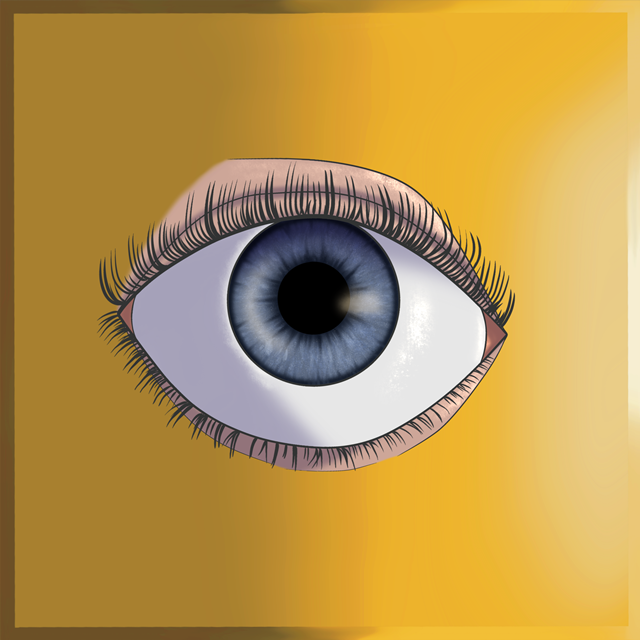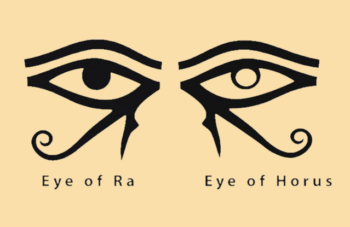Definition:
The “eye” is a complex sensory organ responsible for vision. It detects light and converts it into electrochemical signals, which are then processed by the brain to produce images. Eyes are crucial for perception, allowing organisms to navigate and interact with their environment.
Etymology:
The word “eye” comes from the Old English “ēage,” which is derived from the Proto-Germanic “augon” and the Proto-Indo-European root “okw-,” meaning “to see” or “eye.” The term has been used in the English language for centuries to describe the organ of sight.
Description:
The human eye consists of several parts, each playing a crucial role in the process of vision:
- Cornea: The transparent front layer that covers the eye and helps focus light.
- Pupil: The black circular opening in the center of the iris that regulates the amount of light entering the eye.
- Iris: The colored part of the eye that controls the size of the pupil.
- Lens: The transparent structure behind the iris that focuses light onto the retina.
- Retina: The light-sensitive layer at the back of the eye that converts light into electrical signals.
- Optic Nerve: The nerve that transmits visual information from the retina to the brain.
Eyes vary greatly among different species, with adaptations that suit their environments. For instance, nocturnal animals have larger eyes to capture more light, while birds of prey have keen eyesight to spot distant targets.
Symbolism:
The symbol of an eye has been widely spread across the world for thousands of years. The symbol carries many associations that may seem different without context but are actually closely related. To clearly understand the symbolism, it is important to listen to what those who use the symbol believe it represents and observe how they actually use it. It mainly symbolizes a lie and/or a fantasy.
Articles:
Bonfire, Campfire and Pyre
Definition: A “bonfire,” or “campfire,” is a controlled outdoor fire. A “pyre” is a structure, usually made of wood, for burning a body as part of a funeral rite or…
Easter Egg
Definition: “Easter eggs,” or “Paschal eggs,” are decorative eggs that are often given as gifts, used in hunts, or served as part of Easter celebrations. They can be real eggs…
Eye and Smile
Definition: The “Eye and Smile” is a symbol that consists of a single eye and a smile. Etymology: The English word “eye” comes from the Old English “ēage”, which is…
Eye of Deception
Definition: The “Eye of Deception” is a symbolic representation that what is being observed or conveyed is false or misleading. It serves as a warning or indication that what is…
Eye of Fantasy
Definition: “Eye of Fantasy” refers to the symbol of a single eye used to represent a situation that is impossible, unrealistic, or inaccurate. It is often used to indicate that…
Eye of Jesus
Definition: The term “Eye of Jesus,” also known as the “Eye on the Cross,” typically refers to a metaphorical or symbolic concept within Christian theology and spirituality. It is not…
Eye of the Devil
Definition: The “Eye of the Devil” typically refers to a malevolent, watchful gaze that symbolizes evil, misfortune, or a sinister presence. It can be interpreted literally, as an actual eye…
Eye of Truth
Definition: The “Eye of Truth” is a symbolic concept carrying dual meanings. The Eye of Truth is used by spiritual people as a metaphor for seeing that which does not…
Eyes of Horus
Definition: The “Eyes of Horus” is an ancient symbol originating from ancient Egyptian mythology where a set of two eyes were referred to as the Eyes of Horus, Udjat, or…
Formation Around a Fire
Definition: A “formation around a fire” refers to a group of people or objects arranged in an organized pattern around a central fire. Etymology: The term “formation” comes from the…
Illuminati
Definition: “Illuminati” refers to individuals who understand how language, religion, and the world system are scams. Etymology: The term “Illuminati” originates from Latin and means “the enlightened.” It is derived…
Pine Cone
Definition: Pine cones, also known as conifer cones, are seed-bearing structures produced by pine trees. Etymology: The term “pine cone” comes from the Old English “pīn,” meaning “pine tree,” and…
The All-Seeing Eye
Definition: The “All-Seeing Eye,” also known as the “Eye of Providence” or the “Eye of God,” is a symbol often depicted as an eye enclosed in a triangle and surrounded…
The Great Seal of the United States of America
Definition: The Great Seal of the United States is a national seal that symbolizes the authority and sovereignty of the federal government. Description: The Great Seal was adopted by the…
Tower of Babel
Pieter Bruegel the Elder: The Tower of Babel (1563). Lucas van Valckenborch: Tower of Babel (1594). Gustave Doré: The Confusion of Tongues. Definition: “Babel’s Tower” is a fictional tower from…
Zero (0)
Definition: The number “0,” often referred to as “zero,” is a mathematical symbol that represents the absence of quantity or value. Etymology: The etymology of the number “0” traces back…
Religion:
- Bible: The eye is frequently mentioned in the Bible, often symbolizing knowledge, perception, and moral discernment. For example, Matthew 6:22-23 states, “The eye is the lamp of the body. If your eyes are healthy, your whole body will be full of light. But if your eyes are unhealthy, your whole body will be full of darkness.” This passage highlights the idea that clear vision is associated with spiritual enlightenment and moral integrity.
- Book of Mormon: Similar to the Bible, the Book of Mormon references the eye in the context of spiritual insight and purity. In Alma 5:15, it asks, “Do ye exercise faith in the redemption of him who created you? Do you look forward with an eye of faith?” This emphasizes the importance of spiritual vision and faith in Mormonism.
- Quran: The Quran mentions the eye in various contexts, emphasizing God’s creation and the importance of gratitude and righteousness. For example, in Surah Al-Mu’minun 23:12-14, it describes the creation of humans, including the formation of the eyes, as a sign of God’s power and creativity.
- Hadith: In Hadith literature, the eye is often mentioned in discussions of modesty and morality. One well-known Hadith from Sahih Muslim (Book 32, Hadith 6290) states, “The eyes commit adultery, and their adultery is the lustful look.” This highlights the importance in Islam of controlling one‘s gaze to maintain moral integrity.
- Other Religious Texts: In Hinduism, eyes are symbolic in various texts, such as the depiction of deities with multiple eyes representing omniscience. The Vedic scriptures and Upanishads often use the eye as a metaphor for spiritual insight. In Buddhism, particularly in the Sutta Pitaka, the eye is frequently referenced in the context of mindfulness and perception. Norse mythology, as depicted in the Edda, includes the story of Odin sacrificing one eye for wisdom. The Satanic Bible, which promotes self-awareness and personal insight, might symbolically reference the eye in its discussions of enlightenment and understanding.











